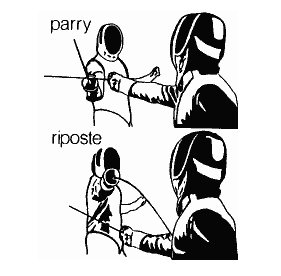Exclusively from Michael Pettis’ newsletter:
[Saul] Eslake has argued as late as last September that he expected China to continue growing strongly over the next few years, and further claimed, in a 2011 report, that Chinese demand for hard commodities will rise quickly for at least another eight years and probably a lot longer:But I believe that, even on quite conservative assumptions (which entail some slowing from the growth rates it has recorded over the past two decades), China’s demand for commodities will continue to grow strongly until at least 2019, and may not start to fall away until 2024; while in India, where the commodity-intensive stage of economic development only began in earnest in 2007, it is likely to continue well into the 2030s.…Eslake says that while the full extent of China’s debt is unclear, much of it is owed by one part of the government to another. “There is the potential for writing off unsustainable obligations that doesn’t necessarily exist in other situations,” Eslake said. “I’m not disputing there are problems there and there is an opaqueness about the size, breadth of the debt problem, but it doesn’t automatically follow that China is facing its own Lehman Brothers moment.”I am not sure what Eslake means by claiming that much of the debt “is owed by one part of the government to another”, but to the extent that this statement is correct it is pretty meaningless and to the extent that it means anything at all it is simply wrong. Although there are a number of intermediaries in the debt process in China, some of whom are indeed government entities, broadly speaking Chinese debt is owed by a group of borrowers that consists mainly of local and provincial governments and their financing vehicles, state-owned enterprises, real estate developers, large manufacturers, and other government related entities (the PBoC, the MoF, the various development banks, etc.).These debts are owed mainly to Chinese households, either indirectly in the form of bank deposits and wealth management products intermediated by the banks, or, to a lesser extent, directly in the form of mutual funds, insurance companies, pension funds, and so on. To the extent that there is intergovernmental debt, this mainly occurs as agencies intermediate depositors and the ultimate borrowers.…When solvency is the problem, implicit losses have to be resolved one way or another, and the costs must ultimately be assigned to some sector of the economy. Insolvency is a risk whenever the economic benefits created by an investment are less than the economic costs associated with the investment. In that case the investment makes a country poorer, but failure to recognize bad debt allows the county to feel richer when the investment is made. How the investment is financed can affect the stability and liquidity of the borrowing entity, but it cannot create or eliminate the original loss.…Who pays for the transfer? In the past in China – and usually in every case in the world – the loss is paid for by the household sector, either in the form of busted deposits, taxes, or hidden transfers, of which the financial repression tax usually is the most important. China’s last banking crisis was paid in this way. Fifteen years ago China’s banking system was insolvent, with estimates that up to 40% of total loans were effectively non-performing had they been correctly identified.The banking system was cleaned up over the next decade partly by implicitly granting massive debt forgiveness to borrowers in the form of extremely low interest rates (perhaps negative in real terms for most of the past fifteen years), which allowed the borrowers to “grow out” of their debt burden, and partly by the very wide spread mandated by the PBoC between the minimum lending rate and the maximum deposit rate, which guaranteed banks a huge profit. After 10-15 years of this, China’s domestically financed bad debt seemed miraculously to resolve itself.But there was no miracle, and I think this what confuses Eslake and others like him who did not understand how the bad debt was actually resolved. There was simply an annual – if hidden – transfer of resources equal, according to my back of the envelope calculation, to between 5% and 8% of GDP from households to banks and borrowers. Did this have an economic impact? Of course it did.


